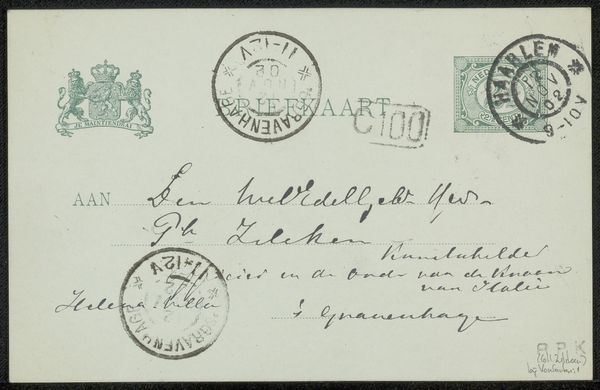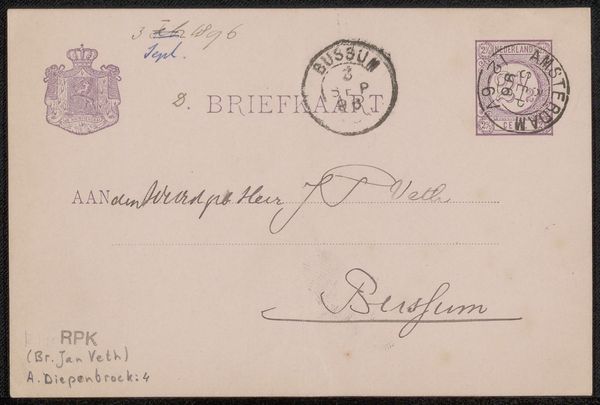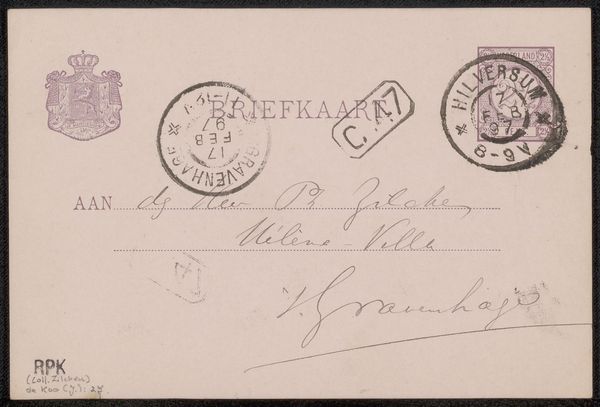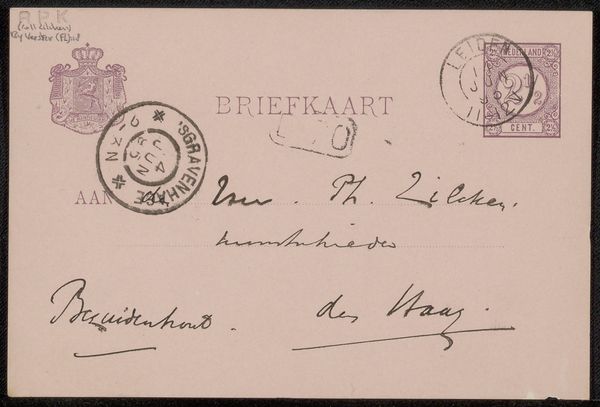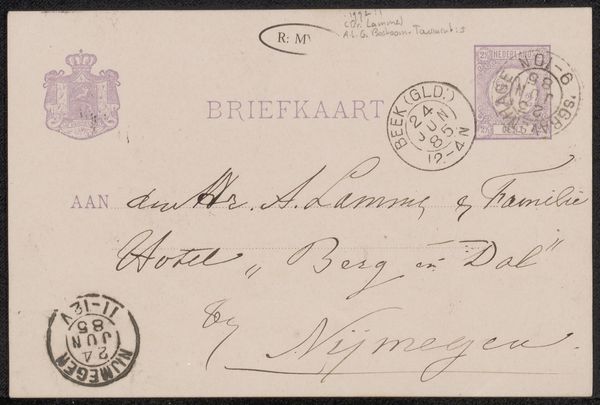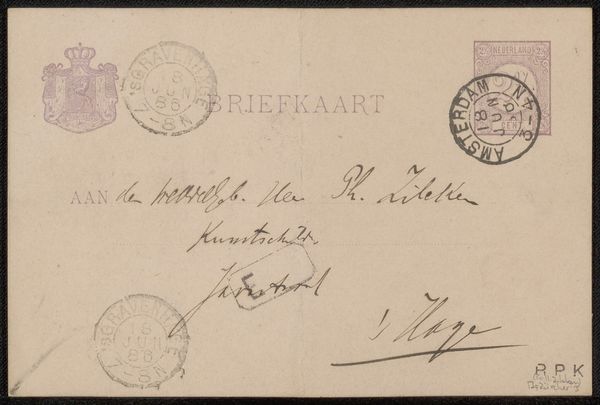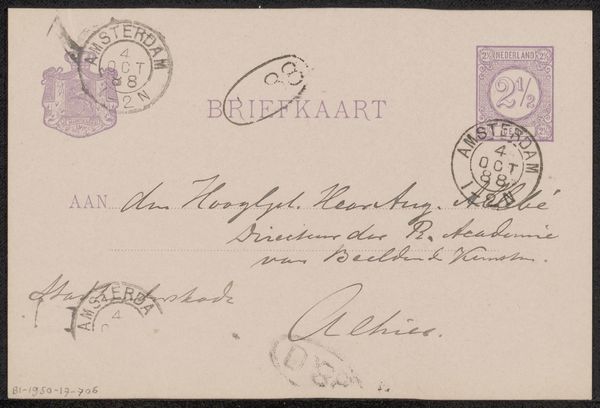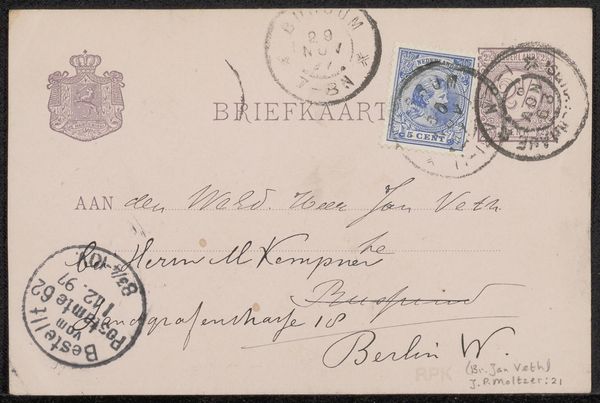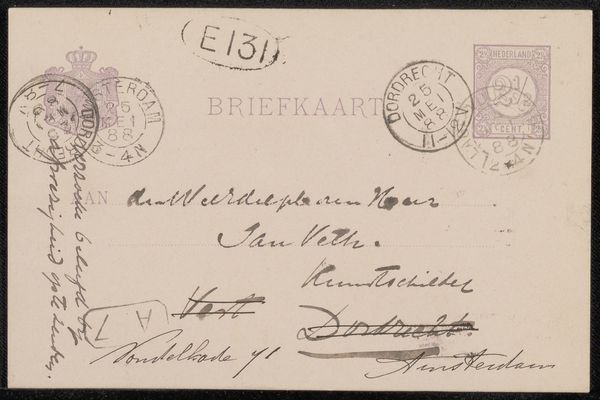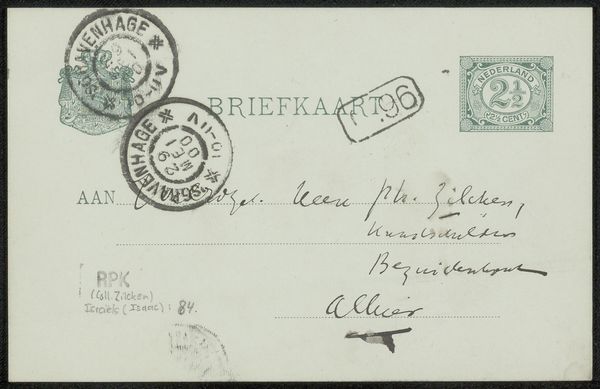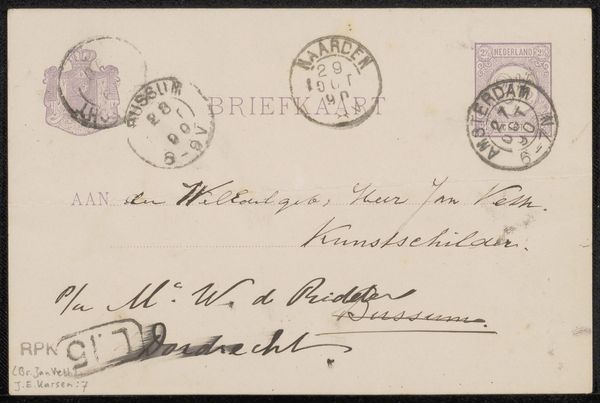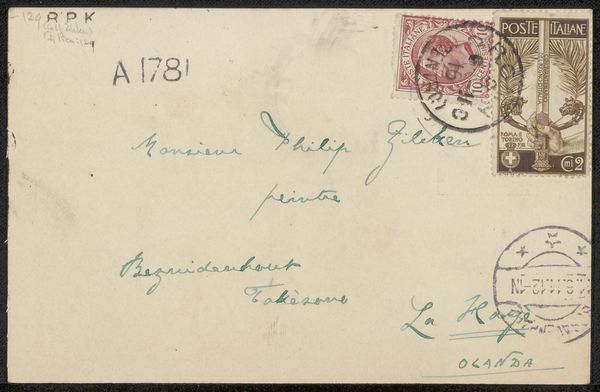
drawing, ink, pen
#
drawing
#
ink drawing
#
pen drawing
#
ink
#
pen
Copyright: Rijks Museum: Open Domain
Curator: This is Albrecht Felix Reicher's "Briefkaart aan Philip Zilcken," believed to have been created around 1895, rendered meticulously with pen and ink. Editor: Immediately, I’m struck by its antiquated nature, yet there's a strange formality—an austere charm about its simple, everyday purpose as mail. Curator: Yes, the elegance in the handwriting is certainly compelling. Look at the deliberate strokes that form the address, the weight of each line contributing to the overall visual texture. Semiotically, we can view the various stamps and postmarks as signs, indicating origin, transit, and reception. Editor: And considering Zilcken, the recipient, was a prominent artist himself, there's a subtext here about artistic circles and communication. Postcards in this era offered quick avenues of exchange within creative communities. Think of the implicit power dynamics in corresponding during the rise of European artistic movements. What role did something as humble as this "briefkaart" play? Curator: Indeed. The composition adheres to the conventions of the time, a clear hierarchical arrangement of information. The upper left bears the regal coat of arms and, above that, a crown implying the cultural value associated with communication infrastructure of the Dutch monarchy in that historical period. Editor: Yet that very infrastructure facilitated colonial projects! The ease with which a message could be transported belies the darker aspects of this era, of power and control over information pathways. Whose voices were carried by these postal systems and whose were suppressed? Curator: That brings another compelling layer to this delicate pen and ink work. Focusing on Reicher’s use of line, the almost calligraphic quality imbues it with grace while its deliberate arrangement shows the precision with which information can and must be conveyed on such a surface. Editor: Ultimately, this briefkaart does more than deliver mail; it silently broadcasts socio-political dimensions worth exploring, reflecting the relationship between artistic and administrative structures during its time.
Comments
No comments
Be the first to comment and join the conversation on the ultimate creative platform.
